 Image search results - "residence" Image search results - "residence" |

Adjacent to Hagi Castle is this Asa Mori Clan Residence.
|
|

Entrance to Asa Mori Clan Residence.
|
|
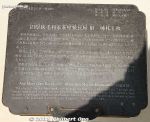
About Asa Mori Clan Residence.
|
|

Asa Mori Clan Residence was a longhouse of rooms.
|
|

Scale model of Hagi Castle.
|
|
|
|

Samurai armor.
|
|
|
|

Shishinden Hall, the most important building at Kyoto Imperial Palace. It faces a plaza of grooved, white gravel. 紫宸殿
|
|

Even the uneme court waitress looks like a princess.
|
|

About the omonayadori.
|
|

Another major palace building is this Seiryoden, the emperor's residence from the late 8th century to 11th century. This is a reconstruction built in 1790 on a smaller scale, but close to the style of the original building. 清涼殿
|
|

We could clearly see inside the Seiryoden. 清涼殿
|
|

The emperor's throne canopy inside the Seiryoden.
|
|

About the Seiryoden.
|
|

Seiryoden 清涼殿
|
|

Roof renovations
|
|
|
|

Kogosho was a ceremonial hall for Coming-of-Age ceremonies for Imperial princes and when the emperor met with the shogun and daimyos. This building was reconstructed in 1958. 小御所
|
|

The Kogosho had a large Zejo hanging tapestry of a pine tree.
|
|

Zejo hanging tapestry inside the Kogosho.
|
|
|
|
|
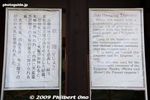
About the Zejo hanging tapestry.
|
|

Keyakibashi Bridge in Oike-niwa Garden.
|
|

The Kogosho faced this garden called Oike-niwa. 御池庭
|
|

Connected to the Kogosho was the Ogakumonjo. 御学問所
|
|

The Ogakumonjo was the emperor's study. It was also used for monthly poetry parties and when the emperor received regents, Imperial advisors, government ministers, Imperial princes, etc.
|
|

The Ogakumonjo had a display of palace guards and official attendants.
|
|
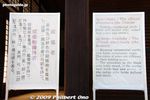
About the palace guards and official attendants.
|
|

Palace guard
|
|
|
|

Painting inside the Ogakumonjo.
|
|

Gonaitei Garden was the emperor's private garden. 御内庭
|
|

Now we came to the palace's largest structure called Otsunegoten. This was the actual residence of the emperor. Emperor Meiji lived here until he moved to Tokyo.
|
|

Rooms of the Otsunegoten had painted walls and sliding doors. 御常御殿
|
|
|

The Otsunegoten has 15 rooms. 常御殿
|
|

About the paintings in a room of the Otsunegoten.
|
|
|
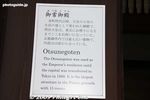
About the Otsunegoten in English.
|
|

Otsunegoten. The connected building beyond is the Omima.
|
|
|

Otsunegoten
|
|
|
|
|
|
|
|

The normal palace tour would end here, but for Emperor Akihito's 20th anniversary, we were allowed to proceed to the northern palace quarters. 清所門
|
|

Entering the northern palace quarters.
|
|

A nice wooded path to the northern palace quarters of Kyoto Imperial Palace.
|
|

Going through another gate to the northern quarters.
|
|

The northern palace quarters is dominated by this Kogogu Tsunegoten, the former residence of the empress. So, did the emperor and empress live separately? 皇后宮常御殿
|
|

The Kogogu Tsunegoten has 13 rooms. The building was constructed at the end of the 16th century.
|
|

Painted fusuma sliding doors in the Kogogu Tsunegoten.
|
|
|

Genkimon Gate 玄輝門
|
|

Sakuheimon Gate, the main gate to Kogo Otsunegoten. Ornate but it was too narrow for us to get a good front view. 朔平門
|
|

Sakuheimon Gate 朔平門
|
|

Higyosha (also called Fuji-tsubo because of the wisteria in the inner courtyard) was the residence of the court ladies. It has a Heian-kyo style architecture. 飛香舎 藤壺
|
|

Higyosha
|
|

About the Higyosha.
|
|

Connected to the Higyosha is the Wakamiya/Himemiya Goten palace where Imperial children lived. Emperor Meiji lived here during childhood.
|
|

Rooms inside the Wakamiya/Himemiya Goten. The building had two sections of four rooms each. One section was for child princes (wakamiya) and the other was for child princesses (Himemiya).
|
|

Wakamiya/Himemiya Goten
|
|

Wakamiya/Himemiya Goten. Normal kids would rip up the paper sliding doors.
|
|
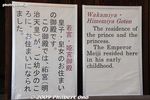
About the Wakamiya/Himemiya Goten.
|
|

Behind the Kogogu Tsunegoten was a display of wedding attire of the emperor and empress.
|
|

Roof of Kogogu Tsunegoten.
|
|

Wedding attire of the empress wearing juni-hitoe kimono, and the emperor wearing sokutai.
|
|

Juni-hitoe kimono worn by the empress.
|
|
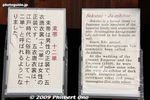
About the juni-hitoe kimono and sokutai.
|
|

Displayed behind the wedding attire was this Nikai-zushi cabinet.
|
|
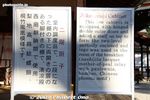
About the Nikai-zushi cabinet.
|
|
|

Seishomon Gate was the exit. This is the gate normally used by the public. In the old days, it was the palace's "kitchen door" since it was used as a service entrance. It was also used by Imperial children. 清所門
|
|

Sweets sold for the 20th anniversary of the enthronement.
|
|

Scale model of the Kyoto Gyoen National Garden.
|
|

Model of Kyoto Imperial Palace.
|
|
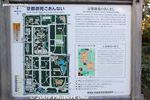
Map and about the Kyoto Gyoen National Garden.
|
|

Lafcadio Hearn Memorial Museum and residence are next to each other on the same road on the fringe of Matsue Castle,
|
|

Entrance to Lafcadio Hearn Memorial Museum.
|
|

Lafcadio Hearn (Koizumi Yakumo) is one of the most famous foreigners to have lived in Japan. He authored or translated books about Japanese ghost/horror stories ("Glimpses of Unfamiliar Japan" and "Kwaidan: Stories and Studies of Strange Things").
|
|

Entrance to Lafcadio Hearn Memorial Museum. 小泉八雲記念館
|
|

Lafcadio Hearn Memorial Museum.
|
|

Pillar of the school where Hearn taught.
|
|

Lafcadio Hearn's hair memorial.
|
|

Lafcadio Hearn relief. Photography was not allowed inside the memorial museum.
|
|

Lafcadio Hearn's former residence is next door to the museum. 小泉八雲旧居
|
|

Inside Lafcadio Hearn's former residence fronting a nice garden.
|
|
|

Must've been a pleasant place to live. Very Japanese.
|
|

Byobu folding screen.
|
|
|
|
|

Lafcadio Hearn's desk.
|
|

Lafcadio Hearn's desk was set higher to his face so his nearsighted eyes could see better.
|
|
|
|
|
|
|
|
|

From here, take the looping bus to the next sight.
|
|
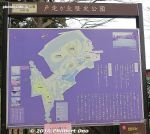
Built in 1884, Tojotei was the residence of Tokugawa Akitake (1853-1910), brother of the last Shogun Tokugawa Yoshinobu. Tojotei is within the garden-like Tojogaoka History Park that was part of Akitake's estate. It now has the Tojo History Museum displaying Akitake artifacts, plum blossoms, cherry blossoms, lots of azalea, and fall foliage. Short walk from Matsudo Station. Park hours are 9 am to 5 pm, closed Mon. (open if a national holiday) Free admission. Small admission charged by Tojotei and the museum.
|
|

Entrance to Tojogaoka History Park.Akitake was supposed to be the next shogun after Yoshinobu, but the Tokugawa reign and Edo Period ended before his time. Akitake only became the last daimyo of the Mito Clan in Ibaraki. He retired at age 30 and lived the rest of his life at Tojotei, a spacious, Japanese-style residence on a hilltop.
|
|

Early-blooming Kawazu-zakura cherry blossoms. I visited in late Feb. 2016.
|
|

Kawazu-zakura cherry blossoms
|
|

Tojotei
|
|

Plum blossoms and Tojotei
|
|

Plum blossoms and Tojotei
|
|

Red plum blossoms
|
|
|

Tojotei. We could enter the residence and step out into the lawn. So when you enter Tojotei, take your shoes with you. Shoe bag provided.
|
|

Built in 1884, Tojotei was the residence of Tokugawa Akitake (1853-1910), brother of the last Shogun Tokugawa Yoshinobu. Matsudo, Chiba, Prefecture
|
|
|
|

View from Tojotei. Tokyo Skytree visible.
|
|

Azalea
|
|

Kura storehouse
|
|

Inside Kura storehouse
|
|

Main room of Tojotei with sweeping views of the lawn outside. Tojotei residence, Matsudo, Chiba.
|
|

They had Hinamatsuri Girls Day dolls decorating the room in late Feb. Tojotei residence, Matsudo, Chiba.
|
|

Hinamatsuri Girls Day dolls
|
|

Hinamatsuri Girls Day dolls
|
|
|

Transom
|
|

Japanese-style rooms inside Tojotei.
|
|
|
|
|
|

Sink for the young couple.
|
|
|
|

Inner courtyard garden
|
|
|

Round window at Tojotei
|
|

Bathroom
|
|

Bathroom in Tojotei
|
|
|
|
|
|

Transom with a butterfly designin Tojotei.
|
|
|

Urinal and toilet
|
|
|
|
|
|
|
|
|






















































































































































